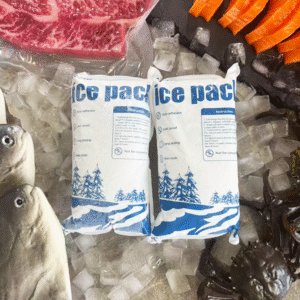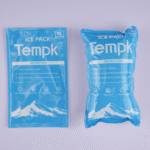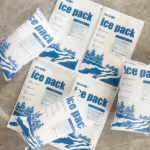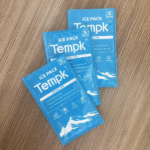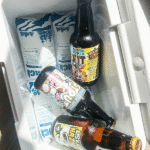How to Pack Frozen Food with Dry Ice Properly: A 2025 Guide
Packing frozen food with dry ice correctly is crucial to ensuring your products stay frozen during transit while also adhering to safety regulations. In this guide, you’ll find a step-by-step breakdown of the process, the best packaging materials, dry ice calculations, safety precautions, and how to stay compliant with 2025 regulations. Keep your shipments in optimal condition and meet all carrier and regulatory requirements.
-
How to calculate the correct amount of dry ice for safe packing
-
Best packaging and insulation methods to prevent sublimation
-
Key labeling rules and compliance steps to avoid costly mistakes
-
How 2025 innovations in cold chain technology can make your shipments smarter and greener
How Much Dry Ice Should You Use to Pack Frozen Food?
Core Answer:
The amount of dry ice needed depends on several factors: the weight of the product, the duration of transit, and the ambient temperature. A general rule is to plan for 5–10 lbs of dry ice per 24 hours of transit for every 10-15 lbs of frozen food. If the package is poorly insulated or the environment is hotter, you may need more.
Dry Ice Calculation Example
For a 2-day transit with 5 kg (11 lbs) of frozen food:
Dry Ice (lbs) = Product Weight (kg) × 1.1 × Transit Days × Safety Buffer
= 5 kg × 1.1 × 2 days × 1.15 = 12.7 lbs of dry ice.
Explanation & Insight:
Dry ice sublimates (turns from solid to gas), meaning it gradually loses mass over time. The better your insulation and the lower the ambient temperature, the slower the sublimation. Always factor in a safety margin to account for delays or inefficiencies in insulation.
| Product Weight | Transit Time | Dry Ice Required | Benefit |
|---|---|---|---|
| 5 kg | 2 days | 12.7 lbs | Keeps products frozen with buffer for delay |
| 2 kg | 1 day | 3–4 lbs | Maintains solid freeze even with 8-hour delay |
| 5 kg | 2 days + buffer | 14–15 lbs | Covers unexpected temperature spikes |
What Packaging and Venting Methods Ensure Safe Shipping?
Core Answer:
For the best dry ice shipping, use a multi-layer insulation system with proper venting. The outer box should be rigid (corrugated or fiberboard), and the inner insulation should consist of EPS foam (expanded polystyrene) or VIP (vacuum-insulated panels). Never seal the package airtight, as dry ice generates gas, which must escape to avoid pressure buildup.
Venting and Distribution Tips:
-
Venting:
Leave small vent holes (around 5–8 mm) for the CO₂ gas to escape. Ensure the liner is loosely closed but not sealed. -
Dry Ice Placement:
Place the dry ice on top and sides of the frozen food, not beneath it, to ensure cold air sinks properly and surrounds the product. -
Voids and Space Filling:
Use foam, kraft paper, or air pillows to fill any gaps inside the package. This reduces airflow and helps keep the temperature stable.
Example in Practice:
A frozen food company optimized its dry ice use by adding extra insulation and repositioning dry ice in perforated bags. They improved the freezing duration by 15% and cut waste by 10%.
What Are the Key Labeling and Documentation Requirements?
Quick Answer:
For air shipments, dry ice must be labeled as “Dry Ice / Carbon Dioxide, Solid (UN1845)” with the net weight clearly marked. Shipments containing more than 5.5 lbs (2.5 kg) of dry ice must also include a Class 9 Hazard Diamond. Keep all documentation updated to avoid shipping delays.
Carrier-Specific Requirements:
-
UPS and FedEx:
Both require waybill notation (“Dry Ice, UN1845, net weight”) and proper labeling for hazardous goods. -
IATA and DOT Rules:
For international shipping, comply with IATA PI 954 and DOT regulations. Always double-check the specific limits of each carrier.
Why Proper Labeling Matters:
Incorrect or missing labeling can result in costly fines, delays, or even the rejection of your shipment. A UN 1845 label ensures that your dry ice is handled as a hazardous material according to legal requirements.
What Are the Safety Precautions You Should Take When Handling Dry Ice?
Core Answer:
Dry ice is hazardous due to its extreme cold and the CO₂ gas it releases as it sublimates. Always wear insulated gloves, goggles, and protective clothing when handling dry ice, and ensure the workspace is well-ventilated. Never seal dry ice in airtight containers, as the buildup of gas can cause explosions.
Safety Best Practices:
-
Use PPE (Personal Protective Equipment):
Wear insulated gloves and eye protection at all times when handling dry ice to avoid frostbite or injury from cold exposure. -
Ventilation:
Ensure all dry ice handling is done in well-ventilated areas to avoid CO₂ buildup, which can displace oxygen and cause asphyxiation. -
Proper Disposal:
Allow dry ice to sublimate in an outdoor area that is well-ventilated. Never dispose of dry ice down drains or seal it in containers.
Real-World Example:
A food logistics company had a 30% reduction in handling injuries after implementing strict safety training and ventilation protocols.
How Do You Handle 2025’s Innovations in Cold Chain Shipping?
Trend Overview:
As technology advances in 2025, smarter cold chain solutions are emerging. This includes AI-driven coolant dosing, smart packaging systems that track temperature in real-time, and eco-friendly liners that help reduce environmental impact.
2025 Innovations:
-
AI-driven temperature management: Predicts sublimation rates and adjusts dry ice amounts accordingly.
-
Smart packaging: Embedded sensors track temperature, ensuring constant monitoring during transit.
-
Sustainable materials: Use of biodegradable insulation and carbon-neutral dry ice is on the rise, reducing waste and carbon footprints.
Market Insight:
With the rise in e-commerce frozen food shipments, customers expect zero-melt deliveries. Cold chain providers are increasingly adopting these innovations to improve temperature control, reduce waste, and meet sustainability goals.
Frequently Asked Questions
Q1: How long does dry ice last in transit?
Dry ice can last 24–72 hours depending on the insulation and amount used. Always add extra for buffer time.
Q2: Can I ship dry ice in personal luggage?
Yes, but only up to 2.5 kg (5.5 lbs) with advance approval from the airline. Ensure the bag is vented and properly marked.
Q3: How do I calculate dry ice for my shipment?
Use the formula:
Dry Ice (lbs) = Product weight (lbs) × 1.1 × transit days × 1.15 safety buffer.
Summary and Recommendations
To pack frozen food with dry ice properly, always calculate the right amount of dry ice, choose appropriate packaging, and ensure proper labeling. For 2025, adopting smarter, more sustainable technologies will enhance efficiency and compliance. Keep safety a priority by following best practices for handling and venting dry ice.
Next Steps:
-
Review your packing methods and integrate AI-powered or smart packaging for better temperature monitoring.
-
Update your SOPs with 2025 guidelines and conduct training sessions on dry ice handling.
-
Ensure compliance with all regulations and carrier requirements to avoid delays.
About Tempk
At Tempk, we specialize in cold chain packaging solutions that reduce dry ice waste by up to 30% while maintaining compliance and performance. Our designs are tailored to meet the stringent requirements of air and ground shipping in 2025. Contact us for a personalized consultation to optimize your shipments.






